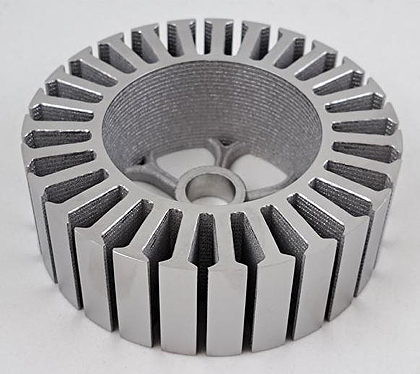- Home » News » Technology News
Magnetic powder could be used to 3D-print motor parts

A European project has developed an iron silicon powder which can be used to 3D-print components for electric motors. This could increase their efficiencies and reduce the consumption of materials compared to the standard practice of cutting and moulding sheet metal to create motors. The powder, produced using a laser-based bed fusion technology, could also cut motor weights “significantly”, without affecting their performance.
Until now, 3D printing of large motor parts has been difficult because the parts can be brittle and break easily.
The three-year Soma (Lightweight solutions for e-mobility by AM for soft magnetic alloys) project, funded by the EU with a budget of just over €5.6m, has brought together partners including Siemens, Stellantis, Gemmate Technologies from Italy, and the materials specialist Elkem from Norway to develop a soft magnetic 3D printing powder that it is easy to magnetise and de-magnetise. The project has been coordinated by the Finnish research and technology company project VTT.
“This is a project with potential to transform motor parts manufacturing,” says Tomi Lindroos, the team leader at VTT. “We have successfully created a new specialised powder with good printability, based on silicon-steel (with additives).
“3D-printed components,” he adds, “show enhanced ductility and competitive magnetic properties.” The powder could avoid the restrictions of traditional manufacturing techniques and open up novel design opportunities for motor components.

The new powder is being produced in a small-scale pilot atomiser at the Norwegian Catapult Centre for Future Materials. The powder has already been used to 3D-print components to evaluate the quality and to manufacture demo devices. The 3D printing and part qualification was done by VTT and Siemens.
The powder has also been used to produce a motor for an electric scooter, based on by modelling carried out by Gemmate and VTT.
The powder will be introduced to the market by Elkem to allow potential users to evaluate its viability for future commercial production. “The product is currently available in small test volumes,” reports Elkem’s project leader, Jan Ove Odden.





